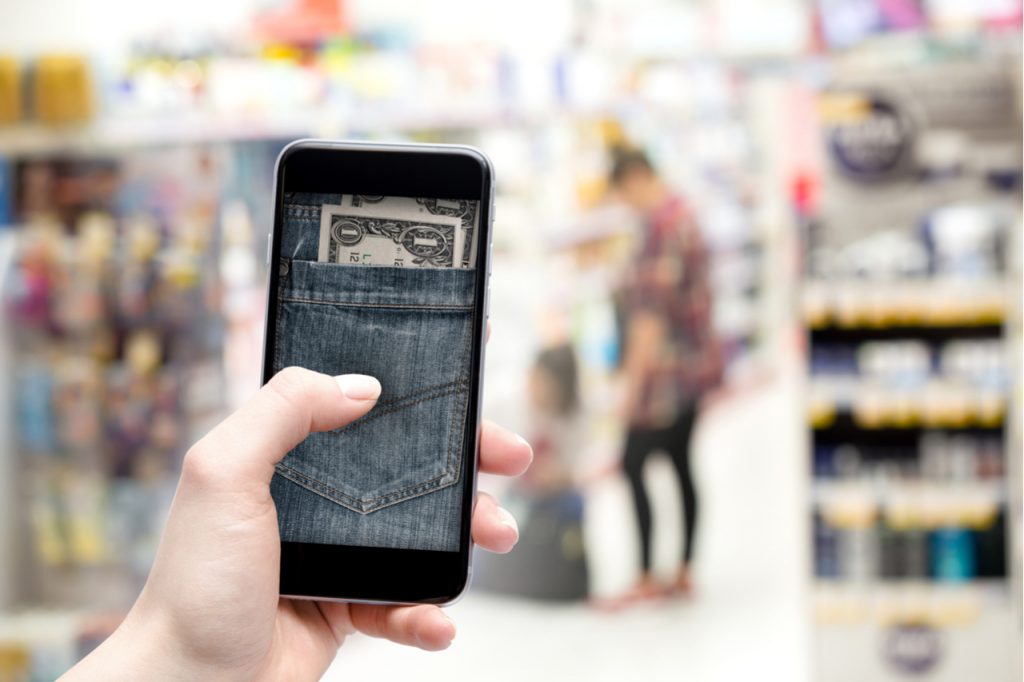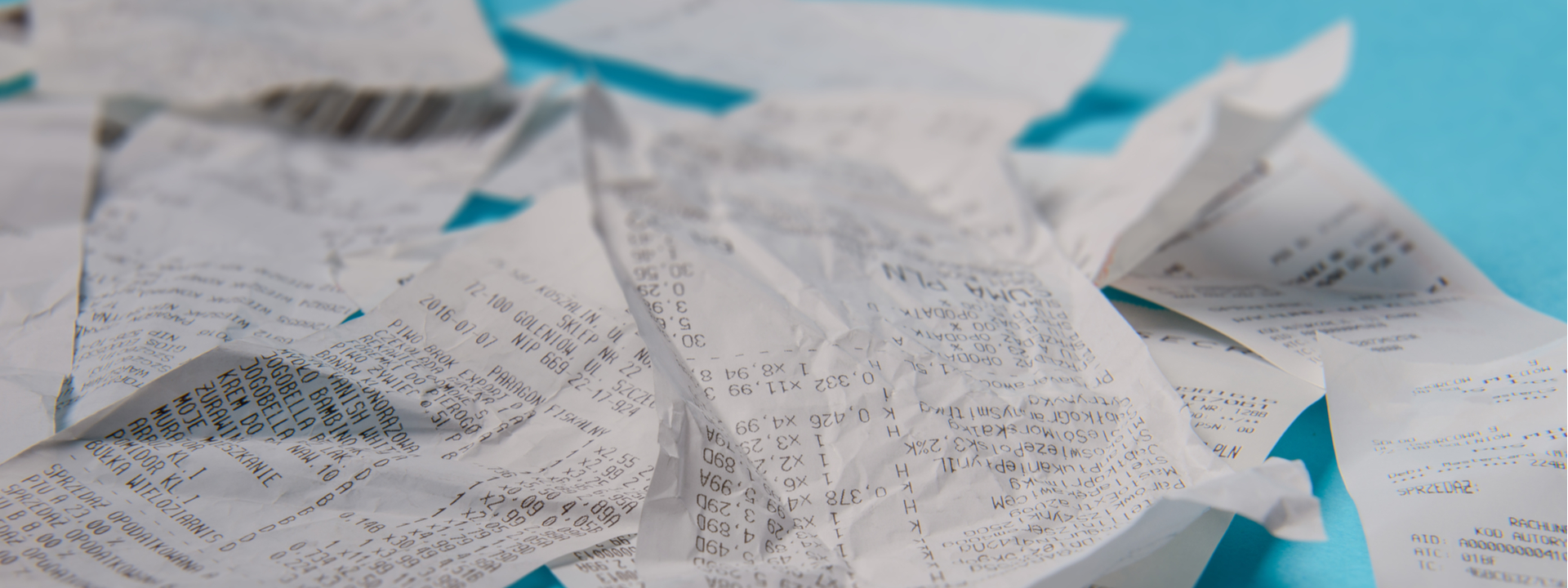11 billion receipts printed and no fully integrated solution - why?
The financial technology ecosystem has given birth to thousands of new startups and business models, from AISPs (Account information service providers) to PISPs (payment initiation service provider), loyalty systems, wealth and investment managers, loan initiators, but despite this context of innovative new services putting our financial data to new uses, 70% of us do not trust third parties over our banks. The PSD2 directive earlier this year has given rise to ‘Open banking’ and forced our traditionally closed banks to have open APIs through which the consumer can authorise the sharing of their own financial data, enabling third parties to help us manage our money in new ways, often through mobile applications on our phones.
We now have more ways to pay than ever before, the amount of money sent by paper cheque in the UK was down 22% last year, 52% of in store transactions are now contactless and uptake of mobile wallets as payment has seen a 114% YoY to June 2018.

No easy task eliminating the receipt.
Bank visits are in freefall with 69% of us regularly using online banking whilst Starling, Monzo, Coconut and Revolut have emerged launching digital-only consumer banking services. And yet, amidst all of this frictionless, paperless financial activity, our shopping transactions still result in 11 billion paper receipts being printed in the UK each year, at a cost of £32 million to retailers. Co-op alone prints 26,000 miles of the stuff every week – Why?
The truth is, it’s no easy task to eliminate the receipt, and not for want of trying. A receipt is a proof of purchase, fulfilled by our retailers via one of the thousands of different ePOS systems, which when spent by debit/credit card, is both a confirmation of payment and a relic of a transaction which has protected both our identity and bank details whilst authorising that interaction with the retailer. Matching us with our spend is surprisingly difficult and requires our permission, retailer, ePOS and banking integration – no mean feat.

Flux.
As we speak, a startup called Flux has emerged in the UK through the Barclays accelerator scheme with Techstars to provide a 360-degree solution which adds value to banks, its customers and the retailers themselves. It has recently launched for Monzo (in a closed pilot), Starling bank and for Barclays customers through the Barclays launchpad app (Barclays’ testing ground for new features). Through what seems to me like magic, payments made to various partnered retailers (currently Pod, E.A.T, Itsu and soon, Costa), push digital receipts back into your mobile banking app, there for you to use however you choose – with the most obvious being for streamlining loyalty schemes and expenses claims. What if you didn’t need to double swipe or remember to collect your points? What if each retailer didn’t have to have its own loyalty app? What if you could push your digital receipt straight into your expense claim software?
It seems like a no brainer, but it’s not all plain sailing. Flux are the leaders of a currently one man pack in the UK, but having downloaded Barclays launchpad and authorised Flux, it’s not without teething problems. Having picked up my ‘Icelandic style yoghurt with banana and honey’ from a London outlet of E.A.T, I eagerly awaited the emergence of a nifty digital receipt within my Barclays launchpad app. Sadly it never came. My own intrigue (rather than need for the receipt per say) led me to contact Flux to see if it could be resolved, something that was dutifully done, but it’s clear that matching me to my itemised receipt data is no mean feat – hundreds of stores, thousands of payments every minute every hour, lots of safeguards in place to help protect our personal data, lots of challenges in tying that all together.

A way of retaining loyalty.
And who really cares about receipts? I’ve lost sleep about many things, but never my receipts. I lie, I did once wake up in the night when I realised I’d misplaced the receipt from some very nice aubergine coloured Clarks which disintegrated on first wearing, but actually the manager was happy to take my word for it and replaced the shoes without question, something that Co-op will be doing for purchases under £10. Whilst many of us will now refuse that little piece of paper at the till, leaving it to be thrown away by the cashier; fashion, homewares, grocery and even Cafe Nero have a digital receipt offer sewn up through email schemes or purpose built loyalty apps like Tesco Pay+ (its digital Clubcard and payment offering), which have become profitable, valuable communications channels in themselves. The Yoyo-built Cafe Nero loyalty app saw customers spend 13% more, that’s not something that the retailer is ready to let go of, especially considering the investment in the technology to start with. Natwest has just integrated Sensibill into their mobile banking service for business, which allows you to photograph your paper receipts turning them into digitised copies – a simple if not entirely satisfactory solution still tied to that piece of paper.
But retailers, banks and indeed marketing people need to be looking beyond the short term in order to see itemised digital receipts’ true value over other systems from emails to loyalty schemes. The challenge perhaps lies in the fact that digital itemised receipts in your banking app will always be a bonus feature rather than a core part of what most consumers really want.

Untapped value of digital itemised receipts.
We need to understand what the untapped value of digital itemised receipts can be before we can begin to sell it into the numerous stakeholders at play. What if our itemised receipt data could help provide a positive picture of our spending to help us apply for a mortgage? What if our grocery shopping could be analysed for impact on the environment, how much sugar we’re consuming or where we could save money on household staples? What if when you booked your holiday to Antigua, your bank asked you whether you wanted to put your gym membership on hold for the duration, or indeed send you reminders to help you achieve that holiday body for said holiday to Antigua?
For more or less unrivalled tech startup Flux, this is a pipe dream and for others, an utter insignificance. As I weigh up the benefits of a Curve vs Monzo, I make a note in my diary to google ‘digital receipt product’ in a year or so – this one could go either way
Image Credits
- Shutterstock

By Constance Meath-Baker
Strategy Planner, UK

